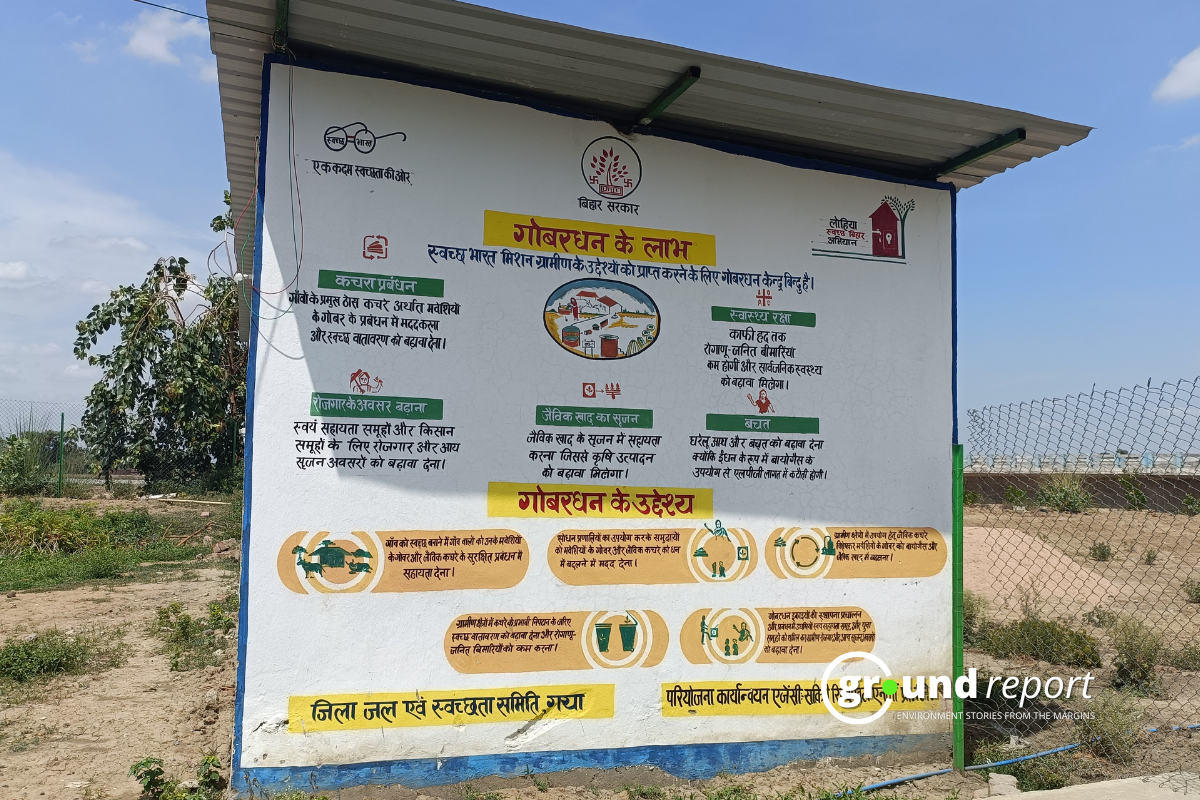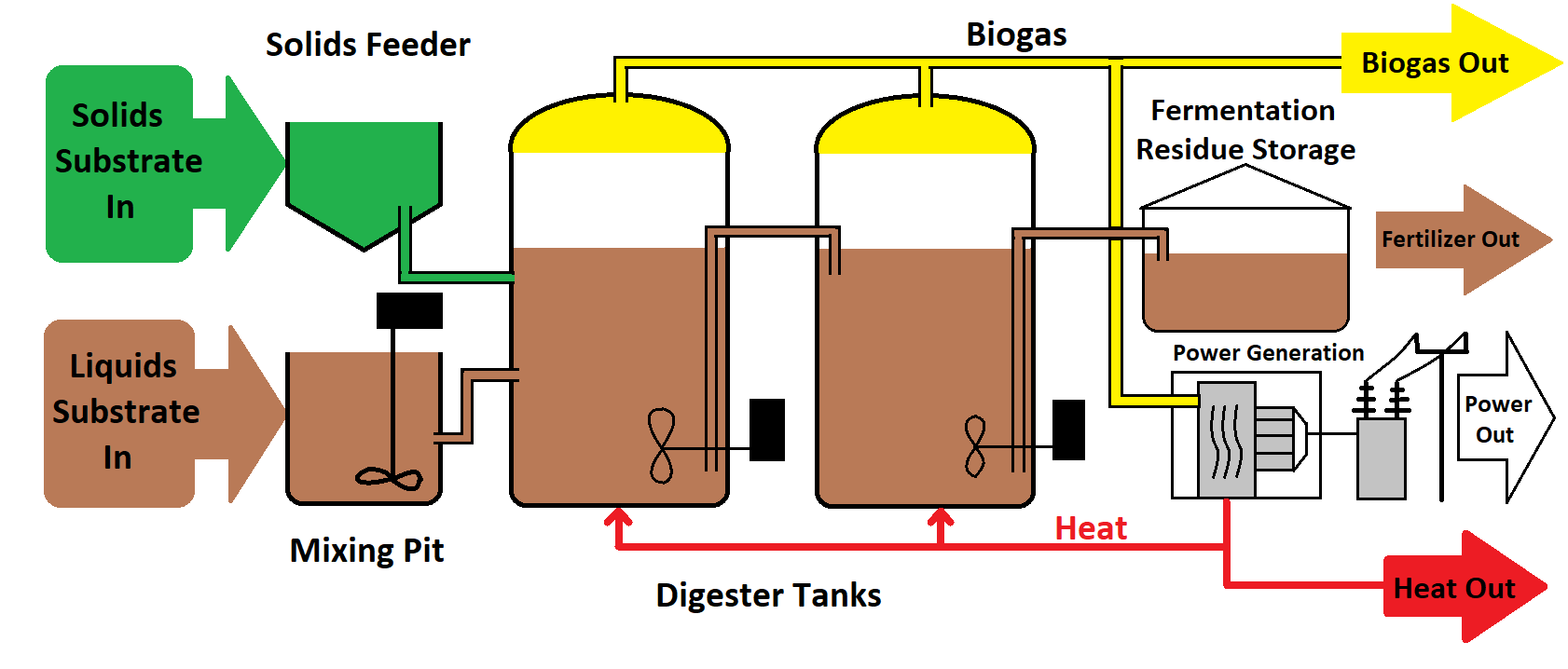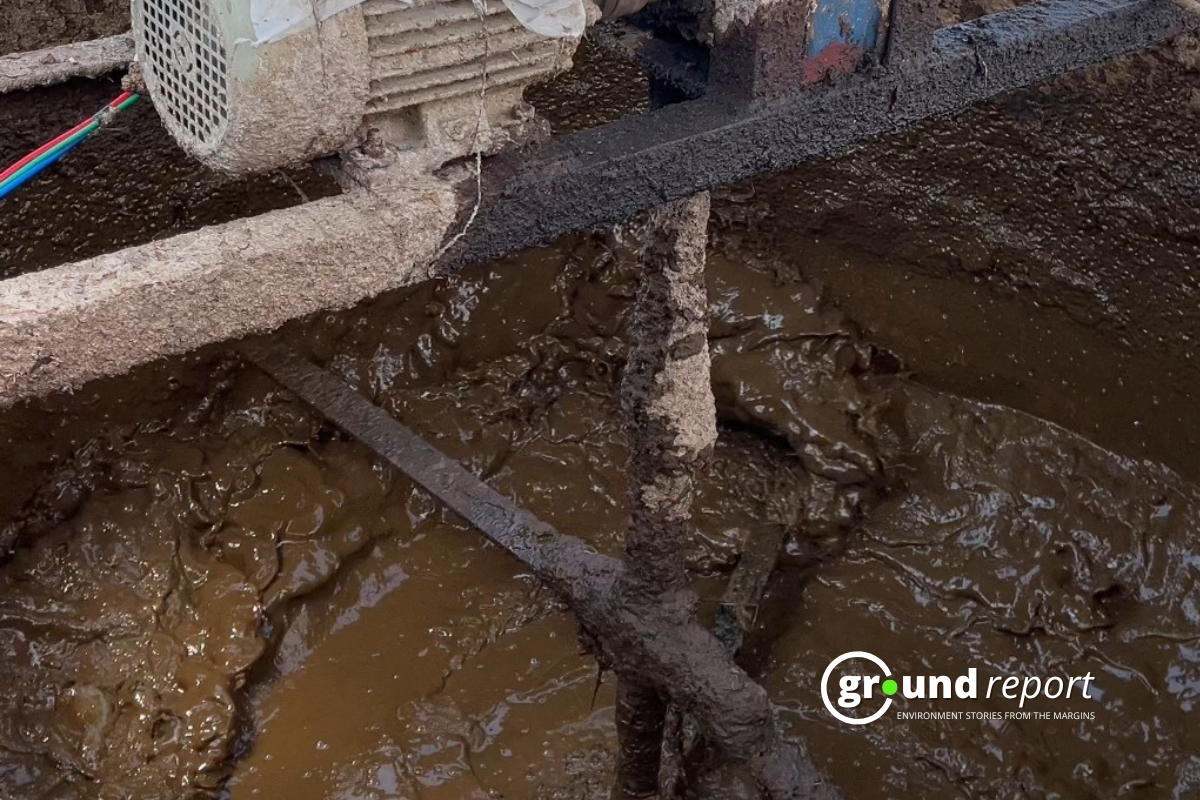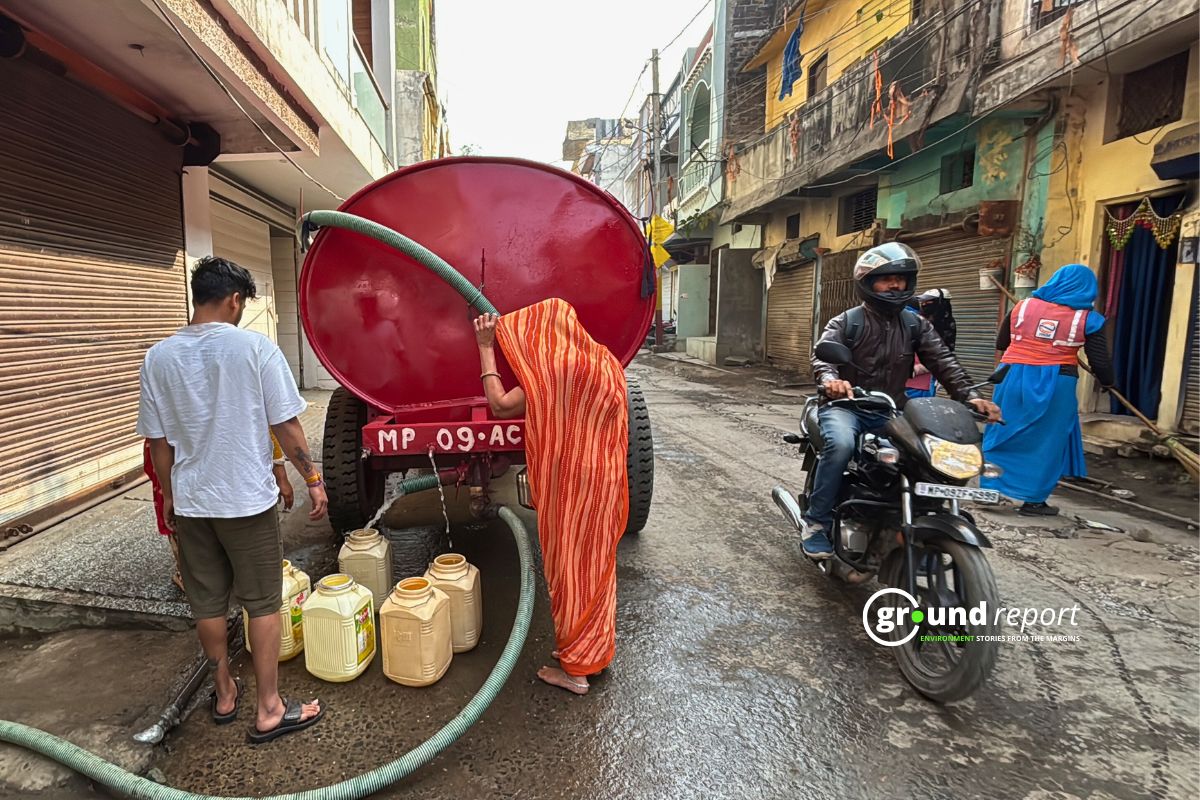Despite government efforts, the GOBARdhan biogas plants struggle to function at full capacity in several states. We report on such plants in rural districts of Madhya Pradesh and Bihar and address the reasons behind their inefficiencies.
The key government program, Galvanizing Organic Bio-Agro Resources Dhan (GOBARdhan) seeks to promote a circular economy by turning waste into wealth and spurring sustainable economic growth, the Indian government plans to establish a strong environment for establishing biogas, compressed biogas (CBG), and bio-compressed natural gas (CNG) facilities. The nodal department for GOBARdhan, the Department of Drinking Water and Sanitation (DDWS), and the Ministry of Jal Shakti have developed a portal for registration and provide information on existing plants.

Gobar gas is a biogas which is an eco-friendly alternative to natural gas and other fossil fuels. It can help reduce greenhouse gas emissions while also increasing access to clean energy sources for off-grid households in rural areas.
In the process, the cow dung is first collected and placed in collection tanks, where organic matter is mixed with water until it is uniform. Biomass is the term for the slurry that is routinely fed into the digesters, which are closed tanks. It [biomass] then undergoes numerous phases of anaerobic digestion until bacteria completely break down all the components, to produce methane and other gases.

Challenges: Raw material shortage, unskilled crew
According to Swachh Survekshan (SS) 2023, there are 184 registered biogas plants In Madhya Pradesh, out of which 102 are functional, 27 are completed and the remaining are under construction. One such constructed plant is– Gobardhan Plant Simra Khurd in Palera block of Tikamgarh district. However, the plant is currently not operational due to some ‘unknown technical fault’, as informed by Manish Jain, district nodal officer.
Built with 1.66 lakh rupees under the GOBARdhan scheme in a cow shelter, approx 1.5 kilometres away from the residential area. Another issue Manish Jain mentioned is of unskilled crew.
“We need more technical staff to make it operational,” he added.
On the other side, Bihar state has nine functional plants. In Bataspur village in Gaya district, a biogas plant was established in April this year. Here, the struggle is for the raw material i.e. cattle dung.
Manoranjan Samdarshi, Deputy Pradhan of the village, talked about the struggles. He said,
“We buy gobar at 50 paise per kg from the villagers. However, just 150 houses contribute gobar and currently, [only] 50 houses receive gas from the plant.”
The plant was constructed at the cost of 50 lakhs under the above-mentioned scheme with a capacity of 80 m³/day. Interestingly, Manoranjan denied conducting any survey for site selection, to determine the availability of raw materials or data collection to understand community interest before the plants’ construction.

Another biogas plant in Gaya, Bihar in Basari village, 4.3 kilometres away from Bataspur, with a gas production capacity of 80 m³/day. This plant too remains under-utilised due to lack of gobar availability. It is also constructed with Rs. 50 lakhs, funded by Swachh Bharat Mission (Gramin)- Department of Drinking Water and Sanitation (DDWS). Clean gas delivery to 50 houses is formally highlighted in the project details. However, just 25 households are benefitting from the biogas plant, according to Sunil Kumar, the district nodal officer.
“Now, we are also looking for substitutes like wet or other waste to fill the gap of the required gobar in order to run the plant,” Kumar added.
Lack of community collaboration
Urmila Devi belongs to a marginalised caste, and her social realities don’t enable her to contribute to the biogas plant. She lives with her husband and two sons. They have just one cattle. Earlier in 2021, she received an LPG connection under the Pradhan Mantri Ujjwala Yojana (PMUY) but the high cost of refillment discouraged her from continuing the use of the LPG cylinder. Hence, she still cooks food on a mud stove, by burning wood.
“I have heard it is cheaper than a cylinder. But, right now we do not have the connection,” she informed me.
The caste divide among the villagers which comprise the general category, Manjhi community, other SC, ST and OBCs is another major issue, especially in Gaya, Bihar. The people from marginalised communities, with no cattle to provide dung, are the last beneficiaries of this clean energy initiative.
Unfortunately, people from low-income communities majorly cook on mud stoves (chulhas) and are exposed to unhealthy cooking. As per the National Family Health Survey, more than 40% of Indian households still rely on solid fuels like wood, leaves, dung, and charcoal. In India, the usage of clean energy has increased gradually across all social levels, suggesting some progress in energy justice.
However, the most disadvantaged social groups are Scheduled Castes and Scheduled Tribes. A study (2018) showed only 14.5% of marginalised social groups (Scheduled Tribes, Scheduled Castes, and Other Backward Class households) use clean energy in rural areas.
Speaking on this divide, Samdarshi explained to Ground Report,
“First, we must provide the connections to the villagers from whom we are purchasing gobar.”
However, even for villagers with connections, the gas supply isn’t adequate. Hence, some of them rely on LPG cylinders or chulhas. Nirmala Devi from Bataspur village while making tea said,
“The gas is supplied thrice a day, for just half an hour to one hour in each interval. I have to keep an LPG cylinder to cook otherwise,” she told Ground Report.

Jain also mentioned a few relatively similar issues in the Gobar gas plant in his district in Madhya Pradesh. According to him, lack of community consensus and clearance on the cost of cow dung forced them to start a small plant of 6 m³/day at a location. The capacity of the plant was determined on the basis of where the gobar was easily accessible i.e. the cow shelter.
“People in the villages still prefer to sell cow dung cakes rather than the cow dung (gobar) as it offers them higher rates,” Jain informed.
A planned approach
Betul district of Madhya Pradesh has 24 functional GOBARdhan plants, the highest in the state with a capacity of 6-10 m³/day made with a cost of approximately 1.5 lakhs each. The site selection was done with the collaboration of MP State Agro Industries Development Co. Ltd.
Dr Nita Pal, Swachh Bharat in-charge in the district proudly talks about the systematic planning in the implementation process.
“The district has allotted gas production from one plant to around 5-6 families living nearby and they contribute gobar daily,” Pal said.
The proximity of the bio-gas plant to the households also allows efficient use of pipeline connectivity. As per the guidelines, the cost of laying of connecting pipeline may vary from location to location, capacity, material used, plant size etc. The cost of the pipeline is assumed as ~ Rs. 1 crore per km. for the steel pipeline and ~ Rs. 0.15 crore for the Medium-density polyethene (MDPE) Pipeline for calculation of financial assistance.
According to her, the key to successfully running a plant is community trust and collaboration with an awareness of the importance of clean energy.
“Transparency is needed among the community on how their involvement in the process will cut the cost and benefit them,” she added.
Support us to keep independent environmental journalism alive in India.
Keep Reading
What is Green Hydrogen? Could it change energy in South Asia?
Blue hydrogen is worst for climate: study
How Increasing space traffic threatens ozone layer?
Hydro Fuel Market: India’s current scenario and the future ahead
Natural Gas is a Misleading term, It is not Natural and clean at all
Follow Ground Report on X, Instagram and Facebook for environmental and underreported stories from the margins. Give us feedback on our email id greport2018@gmail.com.
Don’t forget to Subscribe to our weekly newsletter, Join our community on WhatsApp, and Follow our YouTube Channel for video stories.






